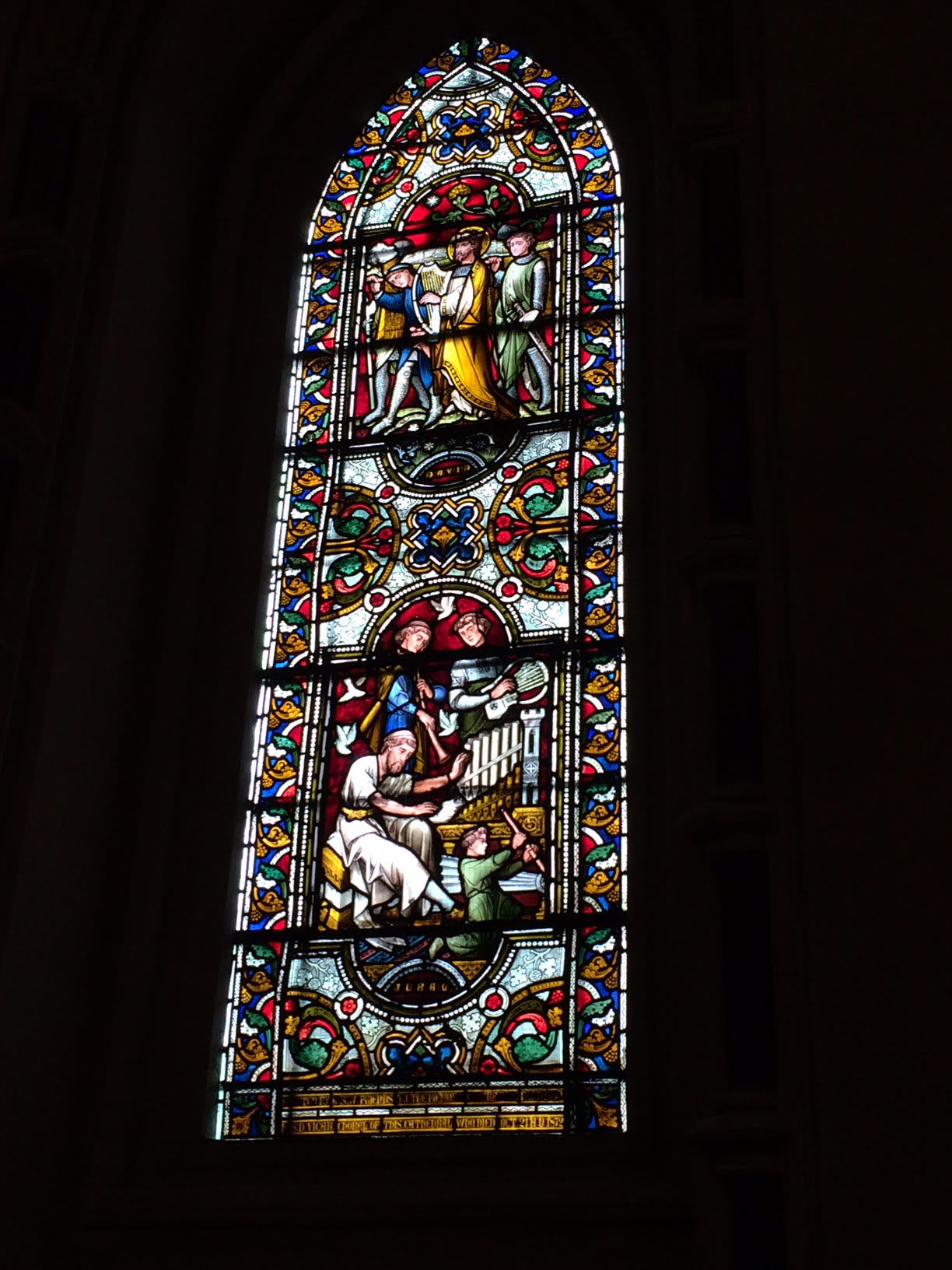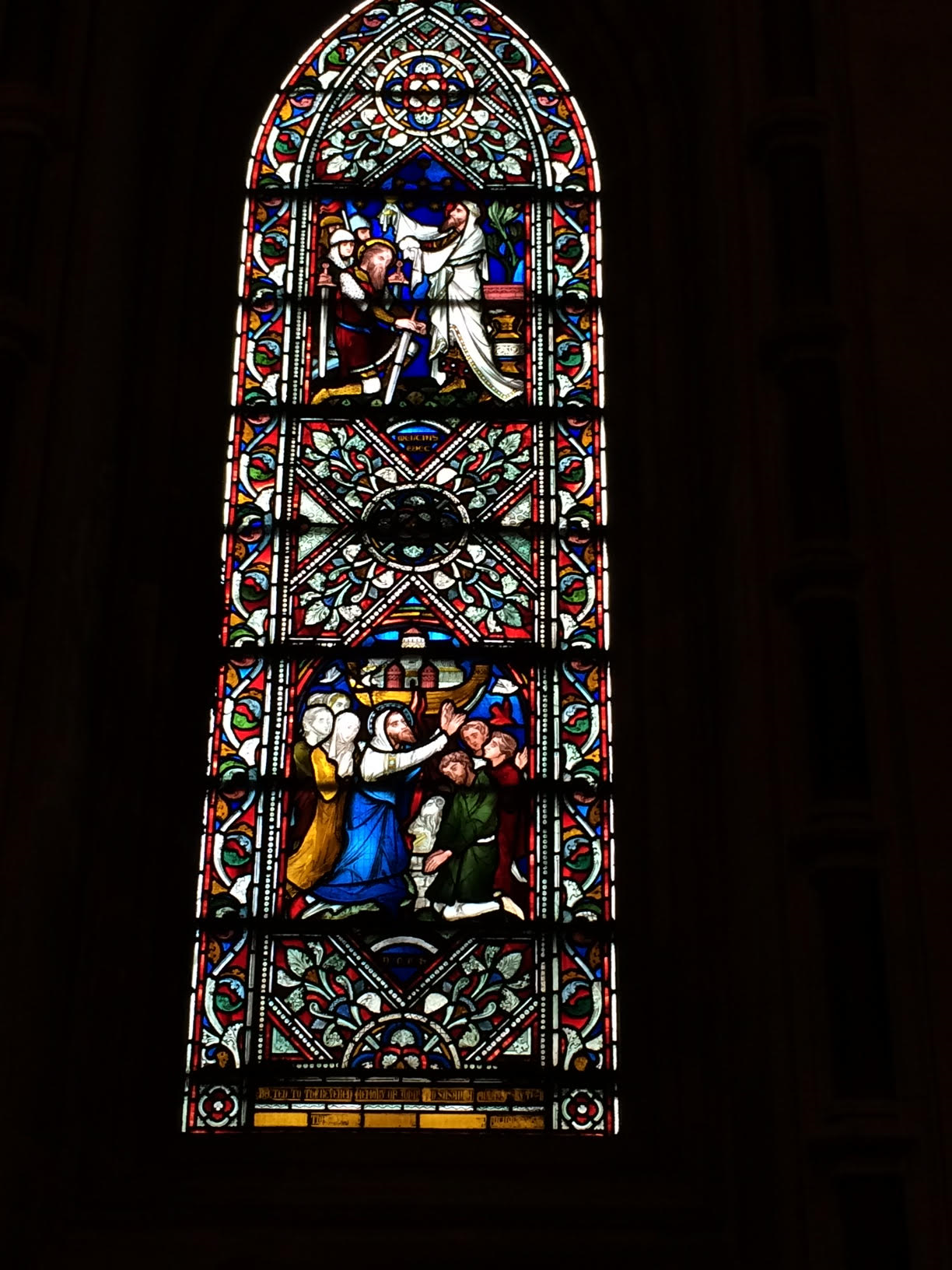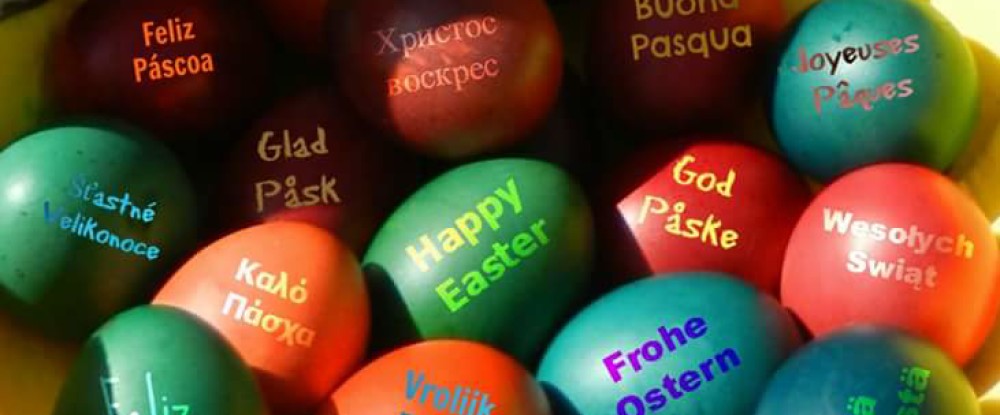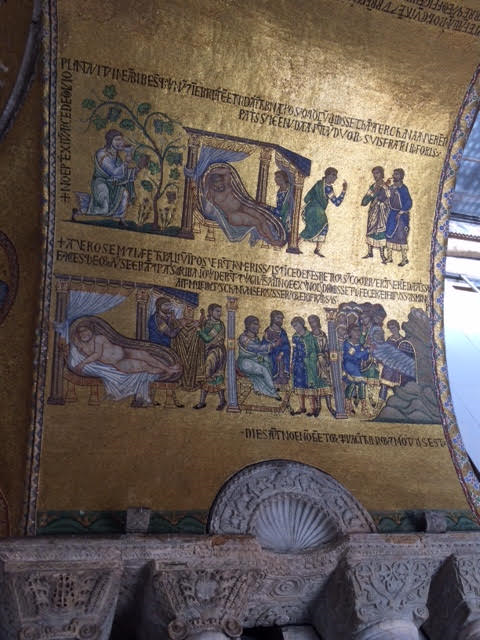
A window of stained glass in Christ Church Cathedral, Dublin (photo by Stephen Morris)

Anothr stained glass window in Christ Church Cathedral, Dublin (photo by Stephen Morris)
The first version of Christ Church Cathedral in Dublin was built of wood just after AD 1028 by the Viking king Sitric Silkenbeard–doesn’t that tell you a lot about him already? It sounds like he could have been Santa Claus! The stone church which is still standing was built by Strongbow and the English in AD 1170 as part of their attempt to invade and subjugate Ireland. The beautiful stained glass windows we see today were installed during the renovations of AD 1871-1878.
Traditionally, the stained glass windows of Gothic churches depict saints or biblical scenes that tell contrasting stories or somehow comment on each other. For instance, a scene of the Last Supper would often be depicted together with a scene of Moses feeding the people with bread from heaven in the desert or a scene of Eve coming from the side of Adam would be matched with a scene of the Church coming from the side of Christ on the cross. The windows in the nave of Christ Church depict fascinating pairs of saints that are not often paired together.
One window pairs King David playing his harp mourning the death of his friend (lover?) Jonathan with Jubal the great-grandson of Adam who was said to have invented musical instruments like the harp [top photo above]. Another window shows Noah blessing his son Shem after the Flood together with Melchizedek, the priest-king of Jerusalem blessing the patriarch Abraham [bottom photo above]. Another window in the cathedral pair depictions of Adam naming the animals with the murder of Abel, the first shepherd, by his brother Cain.
The unusual pairs of scenes in the windows of Christ Church Cathedral (Dublin) are a fascinating series of sermons in colored glass that illuminate often-ignored aspects of the lives of the characters depicted.

